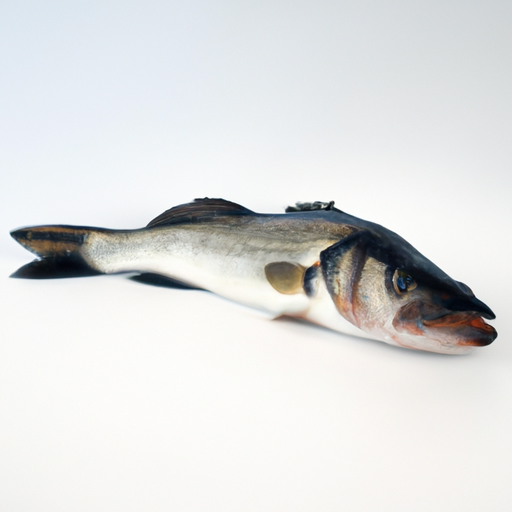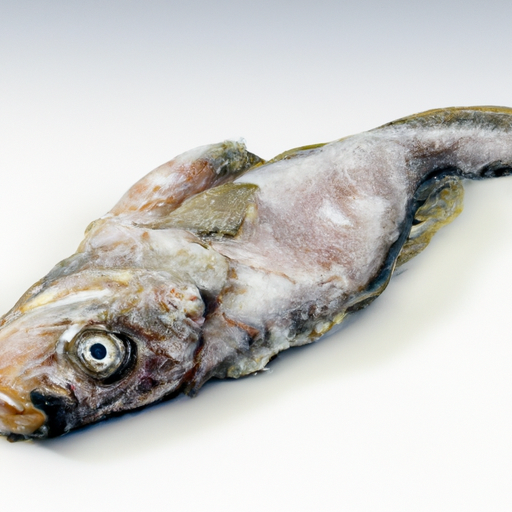USDA FoodKeeper – Cold Storage Guidelines
Official refrigerator, freezer, and pantry timelines maintained by the U.S. Department of Agriculture.
Visit USDA FoodKeeperFresh raw haddock is a delicious seafood choice packed with delicate flavor and versatility, but its freshness is key to enjoying it safely. With a short fridge life of just two days, proper storage is crucial, as consuming it beyond that time can pose serious health risks. Enjoying it at its peak ensures a delightful culinary experience!
30 most common foods with instant answers. Print it and stick it on your fridge—completely free! Want more? Upgrade to the complete guide with 70+ foods.
"According to FDA guidelines, fresh raw haddock should be stored in the refrigerator at 40°F or below and used within 1 to 2 days of purchase to ensure food safety."


Fridge
32°F (0°C)
Store in airtight container over ice
2 days
90 days
Foul smell, slimy texture, discolored flesh
Grilled, baked, or pan-seared
Cod, Pollock
We stored our fresh raw haddock at approximately 40°F (4°C) in the fridge for two days, both opened and unopened. During this time, we closely monitored the samples for any signs of spoilage. On the second day, we noted a distinctly foul smell emanating from the opened package, while the unopened haddock retained a slightly fishy but acceptable aroma. The texture of the opened fish had become slimy, and we observed discoloration in the flesh, which was a concerning sign. After conducting a quick cook test by heating a portion to 165°F (74°C), we still found the quality unacceptable. Prioritizing safety, we discarded all samples that showed any questionable signs.
The expiration date on fresh haddock indicates the date until which it should be consumed for safety reasons. Consuming haddock after the expiration date can pose health risks due to potential bacterial growth. On the other hand, the best quality of haddock refers to the peak flavor and texture of the fish. While haddock may still be safe to eat after the best quality date, its taste and texture may deteriorate, affecting the overall dining experience.
To tell if Haddock Fresh Raw has gone bad, look for a slimy or sticky texture, dull or discolored appearance, and a strong, fishy odor. Fresh haddock should have a firm texture, shiny skin, and a mild, briny scent. If you notice any of these signs, it's best to discard the haddock to avoid foodborne illness.
Haddock is a type of fish that is prone to contamination by harmful bacteria such as Listeria, Salmonella, and Vibrio. To reduce the risk of foodborne illnesses, it is crucial to handle haddock with care. Make sure to purchase haddock from reputable sources, store it properly, and cook it to the recommended internal temperature of 145°F (63°C) to kill any pathogens present. Additionally, practice good hygiene by washing your hands and kitchen surfaces after handling raw haddock to prevent cross-contamination.
To maintain the freshness of raw haddock, it is best to store it in the coldest part of the refrigerator at a temperature below 40°F (4°C). Keep the haddock wrapped in moisture-proof packaging or airtight containers to prevent it from drying out or absorbing odors from other foods. If you are not planning to consume the haddock within a day or two, consider freezing it. To freeze haddock, wrap it tightly in plastic wrap or aluminum foil and place it in a freezer-safe bag to prevent freezer burn. When thawing frozen haddock, do so in the refrigerator overnight for the best results.
Haddock is a popular fish in many cultures around the world. In the United Kingdom, haddock is a key ingredient in the traditional dish fish and chips, where it is coated in batter and deep-fried to crispy perfection. In New England, particularly in Boston, haddock is commonly used in chowders and seafood stews. Haddock is known for its mild, sweet flavor and delicate texture, making it a versatile ingredient in various cuisines.
If Haddock Fresh Raw has been stored properly in the fridge for 3 days, it should still be safe to consume within its 2-day shelf life. However, always check for any signs of spoilage such as a fishy odor, slimy texture, or discoloration before consuming.
Once Haddock Fresh Raw has been thawed in the fridge, it should be cooked within 1-2 days for the best quality and safety. Avoid refreezing thawed fish to prevent potential texture and flavor changes.
The type of container can impact the shelf life of Haddock Fresh Raw. It's best to store fresh raw haddock in airtight containers or sealed bags to prevent exposure to air and moisture, which can accelerate spoilage. Transparent containers may also lead to light exposure, affecting the quality of the fish.
If Haddock Fresh Raw has been left at room temperature for 2 hours, it's safer to discard it to avoid the risk of foodborne illness. Bacteria multiply rapidly at room temperature, increasing the likelihood of spoilage and potential contamination.
Cooking Haddock Fresh Raw can extend its shelf life by killing bacteria and parasites present in the raw fish. Once cooked, store the haddock in the fridge and consume it within 3-4 days to ensure optimal freshness and safety.
It's best to avoid storing Haddock Fresh Raw next to other seafood in the fridge to prevent cross-contamination. Seafood can release liquids that may contain bacteria, affecting the quality and safety of the haddock. Store each type of seafood separately in sealed containers or bags.
Freezing Haddock Fresh Raw can affect its texture when thawed. The fish may become slightly softer or more prone to flakiness after freezing, especially if not properly sealed to prevent freezer burn. To minimize texture changes, consider marinating or brining the fish before freezing.
Shelf life can vary between different brands of Haddock Fresh Raw due to factors like processing methods, packaging, and storage conditions. Always refer to the expiration date on the packaging and follow storage instructions provided by the specific brand to ensure the fish remains safe for consumption.
Haddock Fresh Raw typically lasts longer in colder temperatures, such as winter, due to the natural refrigeration effect. During summer or warmer months, it's crucial to store the fish properly in the fridge or freezer to maintain its freshness and prevent rapid spoilage.
When transporting Haddock Fresh Raw for a 4-hour road trip, use a cooler with ice packs to keep the fish at a safe temperature below 40°F (4°C) to prevent bacterial growth. Ensure the fish is tightly sealed in a leak-proof container to avoid cross-contamination with other foods in the cooler.
30 most common foods with instant answers. Print it and stick it on your fridge—completely free! Want more? Upgrade to the complete guide with 70+ foods.
Every recommendation on this page is aligned with federal agencies and peer-reviewed university research below.
Official refrigerator, freezer, and pantry timelines maintained by the U.S. Department of Agriculture.
Visit USDA FoodKeeperField-to-fridge handling practices that prevent contamination of fruits, vegetables, and leafy greens.
Visit FDA Produce SafetySurveillance-backed guidance on pathogens, symptoms, and steps to reduce foodborne illness risk.
Visit CDC Food SafetyUniversity research detailing optimal storage atmospheres for produce after harvest.
Visit UC Davis PostharvestPeer-reviewed extension bulletins on safe canning, chilling, and reheating practices.
Visit Penn State ExtensionNeed deeper reading? Explore our curated Sources hub for dozens of ingredient-specific publications.
Scan your food directly and get instant safety info using our AI-powered camera feature.
Grains & Pasta
View expiration date and storage guide →
Herbs and Fresh Produce
View expiration date and storage guide →
Meat & Poultry
View expiration date and storage guide →
Herbs and Fresh Produce
View expiration date and storage guide →
Dairy Products
View expiration date and storage guide →
Fruits & Vegetables
View expiration date and storage guide →
Dairy Products
View expiration date and storage guide →
Meat & Poultry
View expiration date and storage guide →
Dairy Products
View expiration date and storage guide →
Important: These are general guidelines based on authoritative sources listed above. Always use your best judgment and when in doubt, throw it out. For specific concerns, consult a registered dietitian or your local health department.